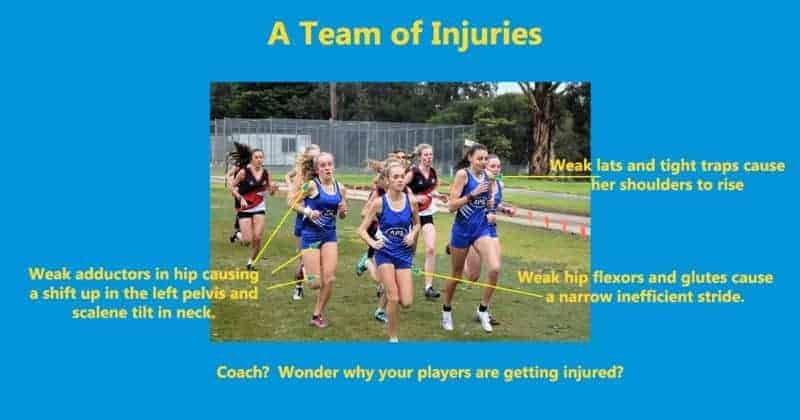How Good is your Running Pattern and Biomechanics?
When it comes to burning calories and improving muscle tone, running is better than walking. Running creates a superior metabolic effect burns more calories per hour and per mile. Running versus walking is more effective at building strength and generating EPOC (Exercise Post Oxygen Consumption).
But running safely requires careful attention to your biomechanics and running pattern. Is your form robust enough to run safely?
Join us as we examine some of the common running patterns that can result in injury.
Correctional Exercise and Movement Therapy Sessions

Running also exposes most people to a much higher risk of injury than walking, because Running is a Challenging Pattern to Master. This is counter-intuitive because nearly every person can emulate some sort of running pattern. However, most people do not have a safe pattern because of asymmetrical muscle tightness and muscle weakness. Always run within your distance limits and try to maintain perfect form 100% of the time.
Share to Facebook • Share on Twitter • Share on G+ • Share on Linked-In
To run perfectly, all the muscles in your body need to have balanced tension and range of motion. Very few people can run perfectly, less than 1% of people. The human body has a good degree of cushion and tolerance for mild pattern faults, but what does “mild pattern faults” mean for you? It begs the real question, “Is running safe-enough for you to do consistently?”

Determining whether Running Consistently is Safe for your Biomechanics
- Do you experience any type of acute pain while running? Common problems include foot pain, runner’s knee, IT-Band stiffness, lower back pain, etc. Pain is your body’s way of telling you that your pattern has a flaw in it. That flaw is creating stress on your connective tissue (cartilage, tendons, and/or ligaments). That pain will lead to injury if the pattern is not resolved.
- Does one part of your body feel tighter than the other? For example, are your hamstrings always tighter than your quads? Is your right calf tighter than your left? Tight muscles groups move the bones into a position of deformity. That deformity causes injury over time.
- Beware the Endorphins. Endorphins are hormones that the body releases while running to blunt pain. The “runner’s high” can easily mask the pain signals the body is sending you. This creates the potential for you to injure yourself while running because your body has a blunted pain response.
- Your First Mile has to be as Strong as Your Last Mile. The most common reason why our “hip” might start to hurt after mile 9 (and not on mile 1) is because in Mile 1 our core and glutes hips were active and strong enough to maintain our pelvis in the proper alignment. After mile 9, one of these muscles group wore out, and the weak muscle allowed the bones to move into a position of deformity. That causes pain near mile 6, but the pain does exceed the endorphine levels until mile 9. In fact, this same runner might experience a tight hip the first two miles, and it “loosens” up after mile 3. The loosening up effect often is a combination of actually warming up and the “Runner’s High.”
- Check your Tread. Check the bottom of your shoes for uneven wear. If you find one part of your sneaker is wearing faster than the other, there is an asymmetry in your running form or pattern. That asymmetry will inevitably lead to pain an injury if it is not corrected.

Bottom Line is this:
- Don’t exercise (or run) in pain.
- If running causes you pain or asymmetrical tightness, see a personal trainer, running coach, or physical therapist to diagnose the source of the pain. These same people can proscribe a therapy program to strengthen the weakened muscle groups.
- If you need to run for health reason (training, weight loss, etc.) and running causes you pain, switch to another cardio based exercise (swimming, cycling, dance, etc.) that alleviates the symptoms.
View More Articles on Physical Therapy and Correctional Exercises

